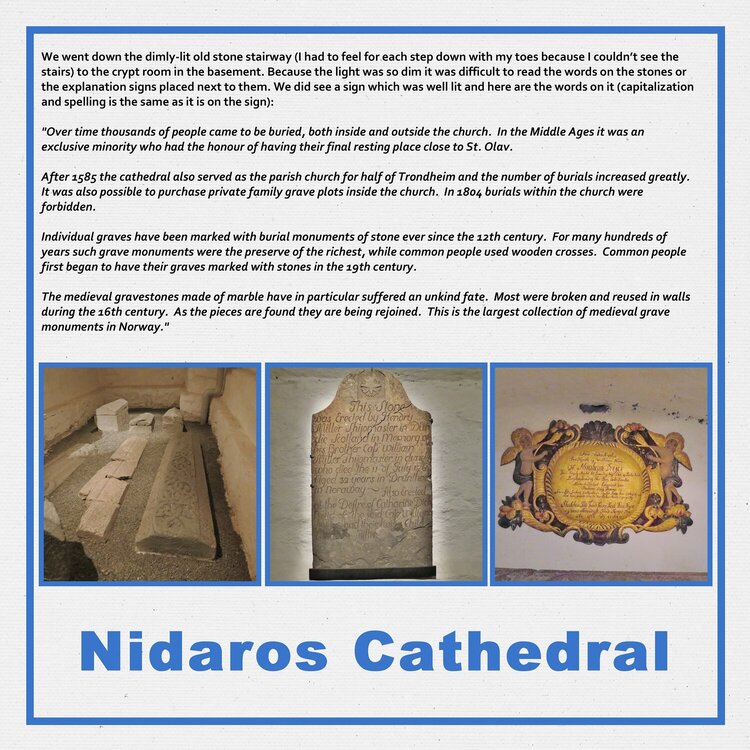EXTRA 11% OFF Orders $100+ With Code: THANKYOU


 Give a Cheer
Give a Cheer
We went down the dimly-lit old stone stairway (I had to feel for each step down with my toes because I couldn't see the stairs) to the crypt room in the basement. Because the light was so dim it was difficult to read the words on the stones or the explanation signs placed next to them. We did see a sign which was well lit and here are the words on it (capitalization and spelling is the same as it is on the sign):
"Over time thousands of people came to be buried, both inside and outside the church. In the Middle Ages it was an exclusive minority who had the honour of having their final resting place close to St. Olav.
After 1585 the cathedral also served as the parish church for half of Trondheim and the number of burials increased greatly. It was also possible to purchase private family grave plots inside the church. In 1804 burials within the church were forbidden.
Individual graves have been marked with burial monuments of stone ever since the 12th century. For many hundreds of years such grave monuments were the preserve of the richest, while common people used wooden crosses. Common people first began to have their graves marked with stones in the 19th century.
The medieval gravestones made of marble have in particular suffered an unkind fate. Most were broken and reused in walls during the 16th century. As the pieces are found they are being rejoined. This is the largest collection of medieval grave monuments in Norway."
No products have been added to this project.
Thanks for spreading positivity!
August 17, 2016
August 10, 2016
August 09, 2016
August 08, 2016
August 03, 2016
August 03, 2016
August 03, 2016
August 03, 2016
August 03, 2016